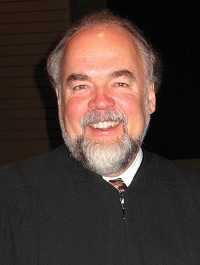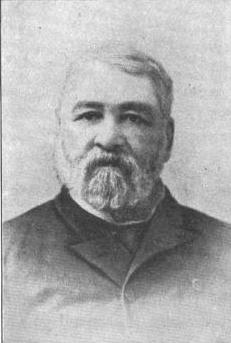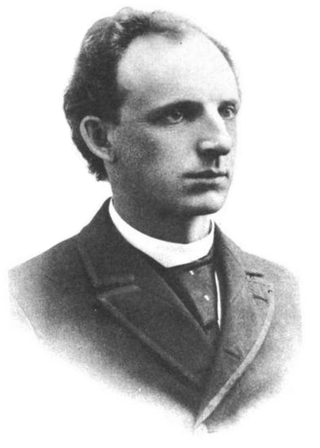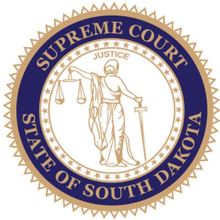The Alaska Supreme Court is the state supreme court for the U.S. state of Alaska. Its decisions are binding on all other Alaska state courts, and the only court its decisions may be appealed to is the Supreme Court of the United States. The Alaska Supreme Court hears appeals from lower state courts and also administers the state's judicial system.
The Alaska Court System is the unified, centrally administered, and totally state-funded judicial system for the state of Alaska. The Alaska District Courts are the primary misdemeanor trial courts, the Alaska Superior Courts are the primary felony trial courts, and the Alaska Supreme Court and the Alaska Court of Appeals are the primary appellate courts. The chief justice of the Alaska Supreme Court is the administrative head of the Alaska Court System.

David Gilbertson is the former Chief Justice of the South Dakota Supreme Court.

The Utah Supreme Court is the supreme court of the state of Utah, United States. It has final authority of interpretation of the Utah Constitution. The Utah Supreme Court is composed of five members: a chief justice, an associate chief justice, and three justices. All justices are appointed by the governor of Utah, with confirmation by the Utah Senate. The five justices elect one of their own to serve as chief justice and another to serve as associate chief justice, each for a term of four years.

The Supreme Court of Georgia is the highest judicial authority of the U.S. state of Georgia. The court was established in 1845 as a three-member panel, increased in number to six, then to seven in 1945, and finally to nine in 2017. Since 1896, the justices have been elected by the people of the state. The justices are currently elected in statewide non-partisan elections for six-year terms, with any vacancies filled through an appointment by the Governor.

Louis Kossuth Church was an American politician who was a New York Supreme Court justice, a member of the New York Legislature, and the ninth and penultimate Governor of Dakota Territory, serving from 1887 to 1889.

The Supreme Court of Alabama is the highest court in the state of Alabama. The court consists of a chief justice and eight associate justices. Each justice is elected in partisan elections for staggered six-year terms. The Supreme Court is housed in the Heflin-Torbert Judicial Building in downtown Montgomery, Alabama.

Gideon Curtis Moody was an attorney and politician, elected in 1889 as a Republican United States Senator from South Dakota. He served two years. He also had served five years as an associate justice of the Dakota Territory Supreme Court, from 1878 to 1883, before entering private practice for a period as general counsel for Homestake Mine.

The New Mexico Supreme Court is the highest court in the U.S. state of New Mexico. It is established and its powers defined by Article VI of the New Mexico Constitution. It is primarily an appellate court which reviews civil and criminal decisions of New Mexico's trial courts of general jurisdiction and certain specialized legislative courts, only having original jurisdiction in a limited number of actions. It currently resides in the New Mexico Supreme Court Building in Santa Fe.

John Fitch Kinney was a prominent American attorney, judge, and Democratic politician. He served as Justice of the Supreme Court of Iowa, twice as Chief Justice of the Supreme Court of the Territory of Utah and one term as the Territory of Utah's Delegate in the House of Representatives of the 38th Congress.

The University of South Dakota School of Law also known as University of South Dakota Knudson School of Law or USD Law in Vermillion, South Dakota, United States, is a professional school of the University of South Dakota and the only law school in the state of South Dakota. Established in 1901, by U.S. Ambassador Bartlett Tripp and U.S. Senator Thomas Sterling. The law school is home to approximately 168 students and has more than 3,000 alumni. With 168 J.D. candidates, it is currently the second-smallest law school and smallest public law school student population among the American Bar Association accredited law schools.

Dighton Corson was an American lawyer, politician, and jurist, and was a pioneer of Wisconsin and South Dakota. He was one of first justices of the South Dakota Supreme Court.

Bartlett Tripp was a diplomat, Chief Justice of the Dakota Territory Supreme Court, first professor of the University of South Dakota College of Law and first President of the South Dakota Bar Association.
Peter C. Shannon was an American lawyer, politician, and judge. After practicing law for a time in Pittsburgh, Pennsylvania, in 1852, Shannon ran unsuccessfully for a seat in the US House of Representatives, losing by five hundred votes to Whig David Ritchie. Shannon was then appointed president judge of the local district court in 1852 by Pennsylvania Governor William Bigler, but served for only a year, having been defeated for re-election in 1853. At the beginning of the Civil War Shannon became a Republican and was elected to the Pennsylvania House of Representatives, serving two terms, 1862 and 1863. He was commissioned Lieutenant Colonel in a regiment which he helped raise, but resigned to continue his political career. In 1862 he campaigned with Governor Andrew Curtin in his successful re-election bid, and in 1864 was part of Lincoln's re-election campaign in Pennsylvania.
Alanson Hamilton Barnes was an associate justice of the Dakota Territory Supreme Court and the namesake of Barnes County, North Dakota.

Charles F. Templeton was an Attorney-General of the Dakota Territory and a justice of the Dakota Territorial Supreme Court from 1888 to 1889, and an attorney and judge in the Dakotas following their admission to statehood.
Steven R. Jensen is the chief justice of the South Dakota Supreme Court since 2021. He was appointed as an associate justice by Governor Dennis Daugaard in 2017. He became the 50th member of the court, succeeding Justice Lori S. Wilbur.
The Dakota Territorial Supreme Court was the highest court of the Dakota Territory, then an organized incorporated territory of the United States. It was the first Territorial Supreme Court in American history, and was established under Article One of the United States Constitution, with justices were appointed directly by the President of the United States. The court sat in Yankton, South Dakota, and existed from March 2, 1861, to November 2, 1889. The first court consisted of three justices: Philemon Bliss, Lorenzo P. Williston, and Joseph Lanier Williams, appointed by President Abraham Lincoln. The court heard no cases until December 3, 1867. In 1879 the court enlarged to four justices, then six in 1884, and eight in 1888.
Scott Palmer Myren is an Associate Justice of the South Dakota Supreme Court.













